Are you looking for a WP Delicious review to help you decide if it’s the right recipe plugin for your WordPress website?
WP Delicious allows you to publish an unlimited number of SEO-optimized recipe cards featuring step-by-step instructions, photos, videos, and nutritional information. Your readers can rate these recipes, or even send their own submissions to publish on your website.
In this WP Delicious review, we’ll look at this popular plugin to see whether it’s right for you.
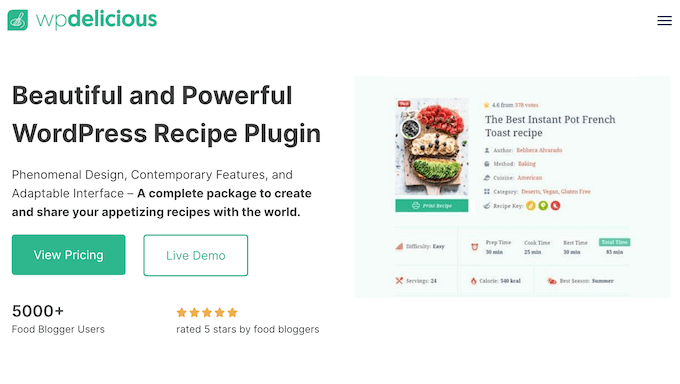
WP Delicious Review: Why Use It in WordPress?
WP Delicious allows you to add beautiful schema-enabled recipe cards to your website. It has a user-friendly builder and multiple layout options, including grid, list, and carousel.
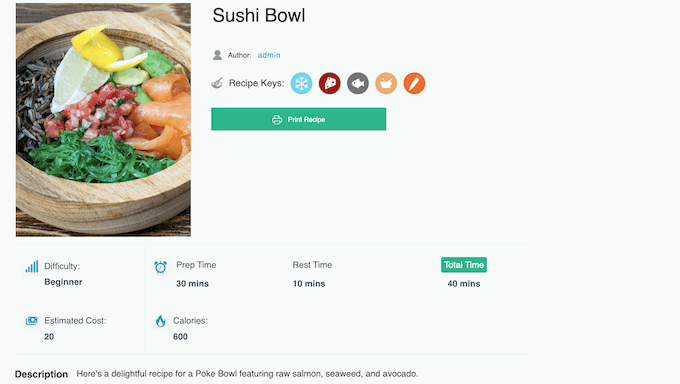
With WP Delicious, you can create very informative and detailed cards featuring a difficulty level, preparation time, cooking time, rest time, estimated cost, best season, and more. This can help your visitors find the perfect recipe for them.
Going further, WP Delicious lets you add photo galleries to the card and even supports affiliate links, so you can make money online. It also has a ton of other features including adjustable servings, nutrition facts, and a built-in analytics dashboard.
After configuring WP Recipes, visitors can register with your website and rate your recipes, or ‘favorite’ them so they’re always within easy reach. This can help you build a community and get more engagement on your food blog.
If you’re just getting started or have a limited budget, then you can download WP Delicious lite from WordPress.org.
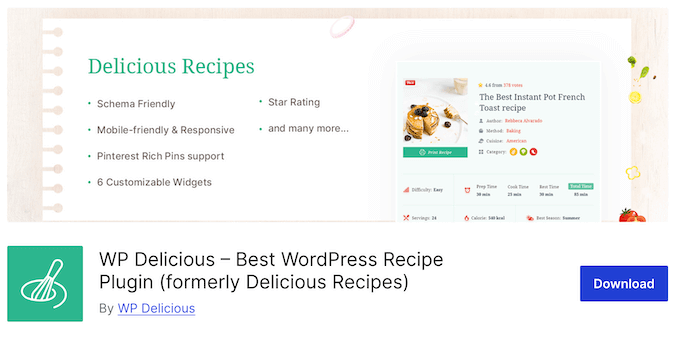
This free plugin allows you to create as many recipes as you want, and automatically adds FAQ and Recipe schema to your content. Visitors can also rate and ‘favorite’ your recipes.
However, if you upgrade to the premium plugin then you’ll get access to extra features including additional layouts, built-in analytics, and a ‘related recipes’ section. You can also accept recipes from readers, and then publish the best ones on your WordPress blog.
WP Delicious Review: Is It the Right Recipe Plugin for You?
If you have a WordPress food blog, then a recipe plugin can display your content in a nice layout containing all the information readers need to cook great food. This can improve the reader experience, which will reduce bounce rate and keep people coming back for more.
With that said, let’s see if WP Delicious is the right recipe plugin for you.
1. Easy to Use
WP Delicious is designed with ease of use in mind. To start, you can install and activate it, just like any other WordPress plugin.
Upon activation, WP Delicious adds a new section to the WordPress dashboard where you can create as many recipes as you want. In this editor, you can add detailed information including the required ingredients and equipment, step-by-step instructions, and a featured image.

You can also help visitors find this recipe by adding relevant keywords, recipe keys, taxonomies, and more.
When you’re happy with how the recipe is set up, you can add it to any page or post using the Recipe Card block.
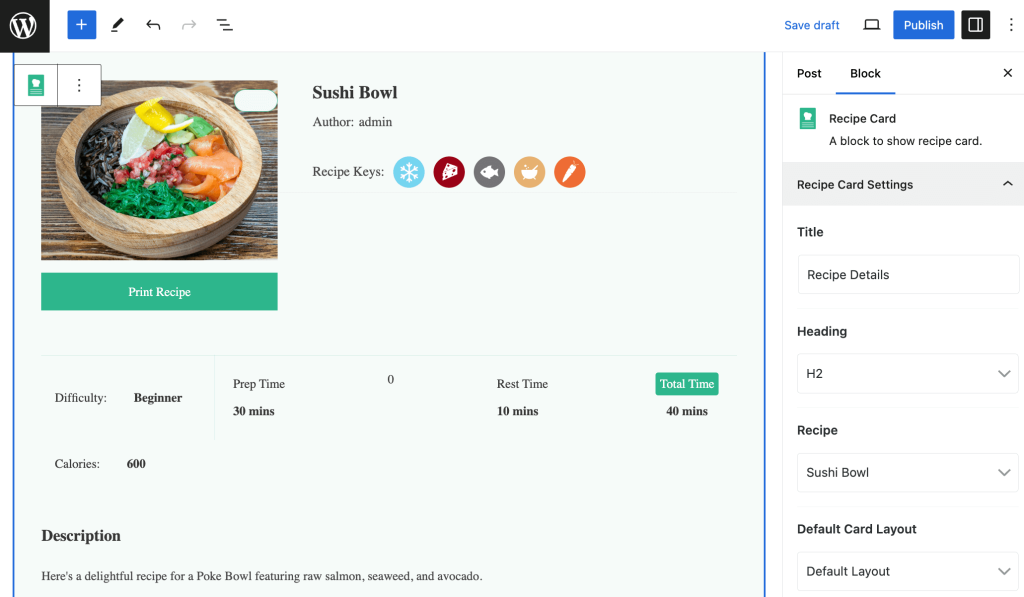
Another option is to create recipes on-the-fly, using the Dynamic Recipe Card.
Simply add this block to any page or post, and then type in the information you want to use.
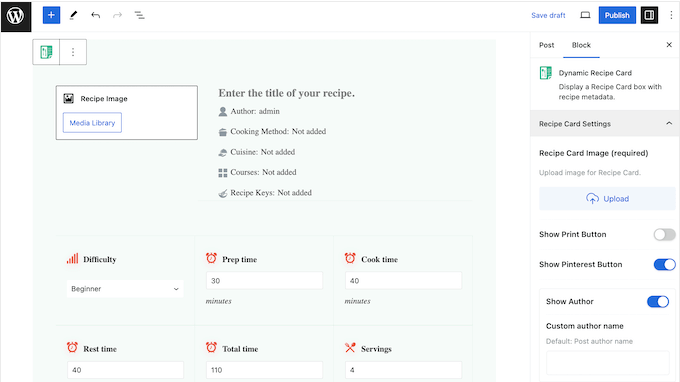
2. Reusable Recipes
WP Delicious provides a central location where you can build all your recipes, similar to how you draft pages and posts.

After creating a recipe, you can display it on any page or post using the Recipe Card. In this way, you can show the same recipe in multiple locations without having to recreate it manually every single time.
If you need to make some changes, then you can simply edit the source recipe. WP Delicious will then update each instance of that recipe automatically, saving you even more time and effort.
3. Customizable Recipe Layouts
If you’re using the free WP Delicious plugin, then you can choose between three different recipe card layouts. However, if you upgrade to the premium WP Delicious plugin then you’ll get access to 8 different layouts.

No matter which layout you choose, WP Delicious is fully customizable, so you can use your own custom units, colors scheme, and even change the permalinks to your preferred URL structure.
You can also upload custom icons for your recipe keys, cooking methods, and recipe tags.
Beyond that, WP Delicious has several blocks that add a specific type of recipe content to the page or post. For example, there’s a Recipe Ingredients block that adds a list of ingredients.

There’s also a Recipe Buttons block that adds ‘Jump to Recipe,’ ‘Jump to Video’ and ‘Print Recipe’ buttons to the page or post.
This allows you to control exactly what recipe content you add to each page, and the order that content appears in. By combining these blocks in different ways and positioning them carefully on the page, you can create all kinds of custom layouts.
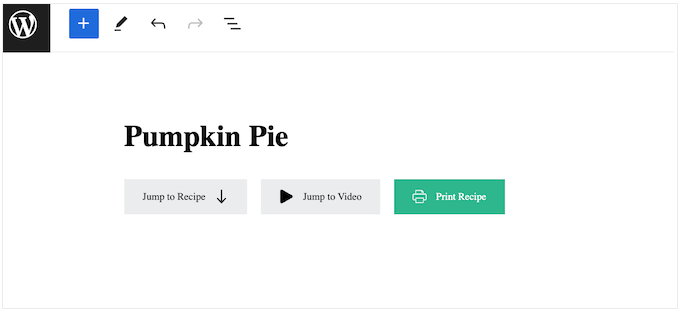
You can also combine these blocks with regular text. For example, you might write and format your step-by-step instructions as a regular blog post, and then use WP Delicious blocks, such as Recipe Ingredients and Recipe Buttons, as additional content.
4. Recipe Schema
All WP Delicious recipes are Google Structured Data optimized and include the Recipe schema markup. This recipe schema markup is a special type of HTML code that gives search bots more information about your recipes. This helps the search engines understand your content and show it to readers who are looking for exactly this kind of content.
Even better, search engines such as Google use this schema markup to create featured snippets. These appear at the very top of the search engine results and include extra information. For example, Google might show your recipe’s ingredients, star rating, cooking time, nutritional value, and other information as a featured snippet.
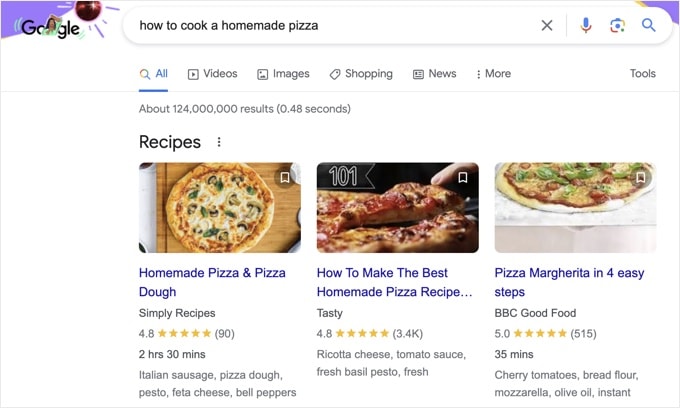
This will instantly makes your recipes stand out in the SERPs, and will likely increase your WordPress blog traffic. This schema markup also means your recipes will appear as Rich Recipe Pins when shared on Pinterest.
5. FAQ Schema
Similar to the Recipe schema, FAQ schema can help search engines understand your content and index it properly.
In addition, FAQ schema encourages search engines such as Google to show your questions and answers in its SERPs. Once again, this makes your content stand out amongst all the competing results. With WP Delicious, you can add an FAQ section and schema to your recipe cards.
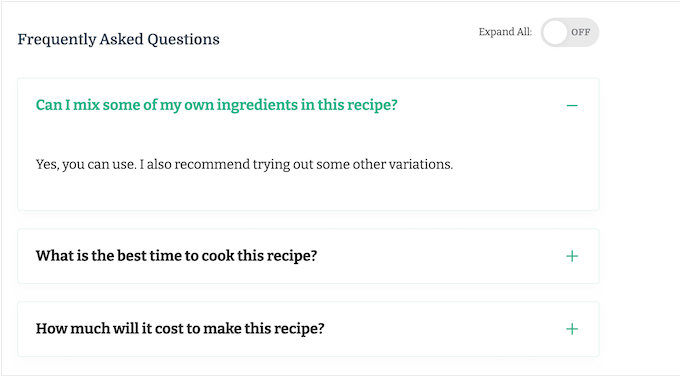
This can provide some useful extra information, while also optimizing your posts for SEO.
6. Optimize for the Search Engines
Beyond schema, the WP Delicious editor allows you to add relevant keywords and metadata to each recipe. This will also help boost your WordPress SEO, by giving search engines even more information about the recipe.
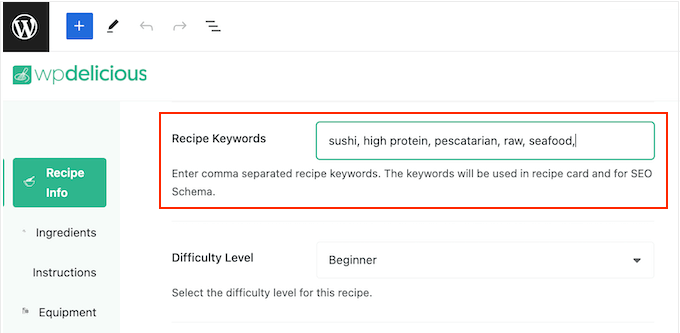
Finally, WP Delicious integrates seamlessly with Rank Math so you can analyze and optimize your recipes using this popular WordPress SEO plugin.
7. Author Profile
With WP Delicious, you can add an author profile to your recipe cards. These profiles can include detailed information, alongside links to the author’s various social media accounts. This means they can help to grow your social following.
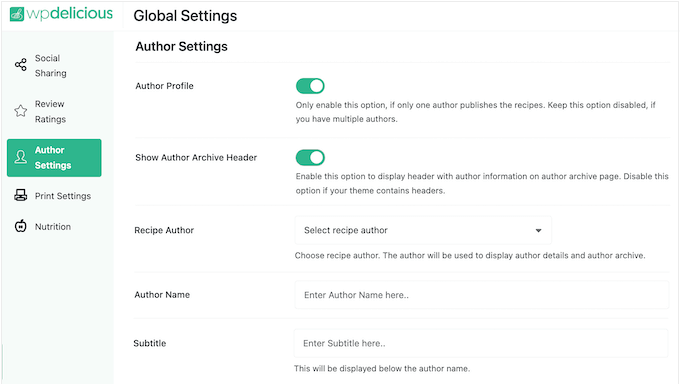
8. Add Nutritional Information
Nutrition labels help readers to make more informed decisions about the meals they cook. They can also make your food website more appealing, especially when compared to recipe blogs that don’t include nutritional information.
With WP Delicious, you can add nutritional information to each recipe including the calories, vitamins and nutrients. You can also customize the serving size and number of servings.

With that done, WP Delicious will display this information as a nutritional label.
In the plugin’s settings, you can choose between two different label styles, and add any extra nutrients you want to use.
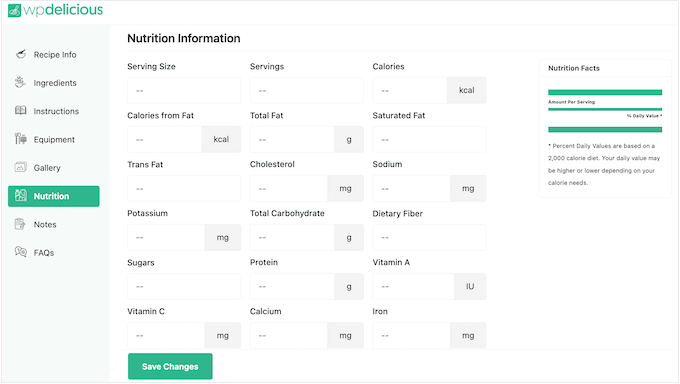
9. Image Gallery and Lightbox
When they’re searching for a recipe, most readers will look at the recipe’s photos first.
Tasty-looking photos are a must for any food website, and WP Delicious lets you go one step further by adding galleries to each recipe.

You can also display these images in a lightbox that appears over the page or post, so readers can take a closer look.
10. Support For Video Galleries
Some visitors may prefer to watch a video, rather than read step-by-step instructions. That said, if you’ve created a video tutorial then you can add it to your recipe card.
This allows visitors to access your recipes in the way that works for them. This provides a much better experience compared to alternative recipe websites that only offer text instructions.
11. Recipe Keys
Keys are small icons that appear towards the top of the recipe card, so visitors can learn more about this meal at a glance.
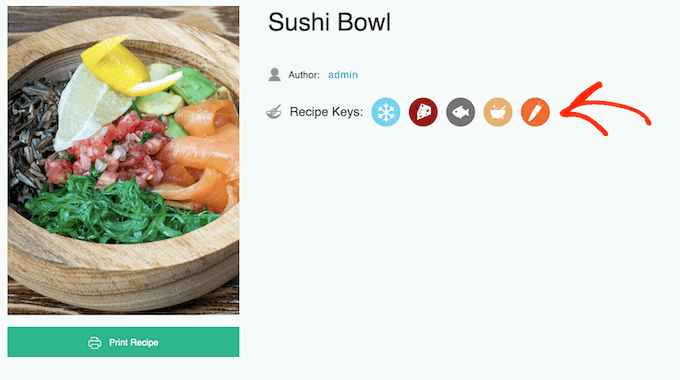
WP Delicious comes with a range of built-in recipe keys that you can use, such as Dairy Free, Egg Free, Keto, Organic, and Raw.
All these default keys are fully-customizable, so you can make any changes you want.

You can also create your own keys and upload custom icons.
12. Pinterest and Instagram Sharing
Food photos and content is very popular on social media platforms. With that in mind, you’ll want to make it easy for readers to share your recipes on social media.
With WP Delicious, visitors can easily share your posts to Instagram and Pinterest.

In particular, WP Delicious formats your recipes so they appear as Recipe Rich Pins when shared on Pinterest. This can improve your visibility and click-through rates on Pinterest.
13. Scale Recipes
When creating a recipe, you can specify the serving size and serving amount. WP Delicious can also use this information to scale the recipe for a different number of servings.
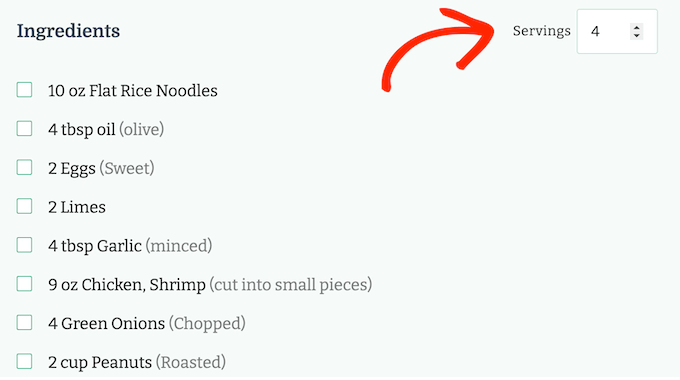
This removes the guesswork and makes your recipes easy to understand, no matter how many people the reader is cooking for.
14. Show Related Recipes
If you upgrade to the premium plugin, then you’ll get access to an Inline Related Posts feature. When enabled, WP Delicious will automatically add related posts to your recipe posts.
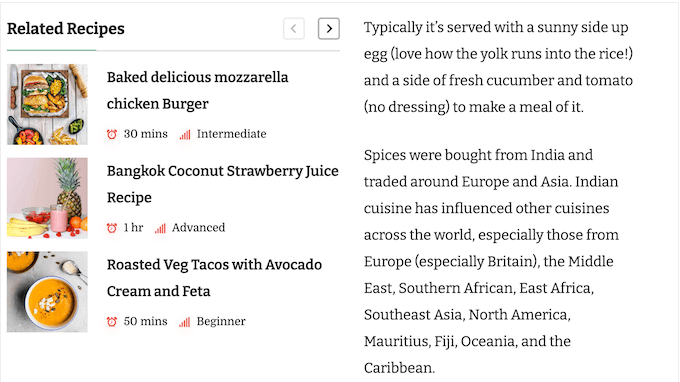
In the plugin’s settings, you can configure how many recipes to include in the section, change the heading, and filter content based on taxonomy.
15. Recipe Widgets
WP Delicious has a number of widgets that you can add to your WordPress theme’s widget-ready areas: Featured Recipes, Recipe Tags, Recipe Category, Popular Recipes, Recent Recipes and Recipe Keys.
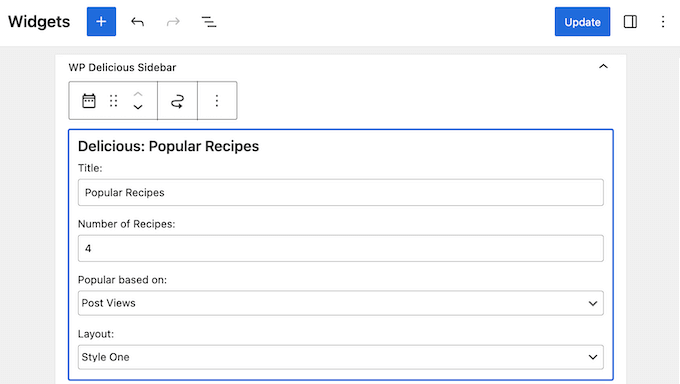
These WordPress widgets give visitors additional ways to explore your content, and can also promote your recipes without distracting from the main page content.
16. Find Recipes with Ease
WP Delicious includes a Recipe Index page that lists all your recipes. This makes it easier for readers to browse your published content, and find the perfect recipe for them.
WP Delicious also comes with an advanced search so readers can filter and find recipes with ease. This search supports ‘AND’ logic, so readers can build very specific search criteria.
Alternatively, you can display recipes based on their taxonomy or term using the Recipes by Taxonomy block. In this way, you can create curated lists of recipes and then control exactly where they appear on your website. For example, you might add specific recipes to a particular landing page, or create a custom ‘Related Recipes’ section.
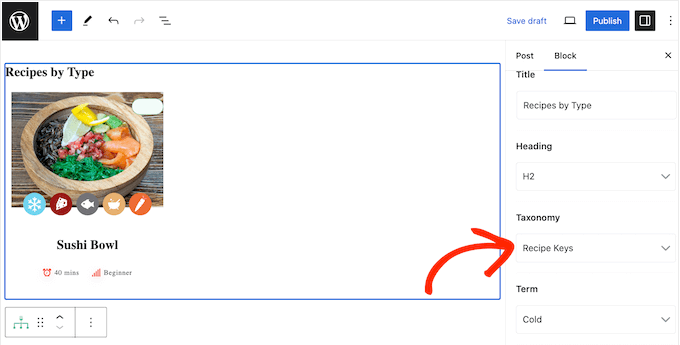
17. Ready-Made Shortcodes
WP Delicious comes with a number of shortcodes that you can use to display your recipes. You can use these shortcodes to show your latest recipes in a carousel, list, or grid layout.
After deciding what shortcode you want to use, you can add it to any page, post, or widget-ready area, and WP Delicious will handle the rest.
For more information, please see our guide on how to add a shortcode in WordPress.
18. Floating Recipe Bar
WP Delicious can add a floating bar to your posts. This provides easy access to some useful features, such as the option to print your recipe, share it on social media, or add to their ‘Favorites’ list.
Visitors can also enable Focused Reading mode, or start a timer while preparing the recipe.

19. Autoload Recipe Posts
When the reader reaches the end of a post, WP Delicious can load another recipe automatically. This encourages the visitor to keep reading, or scroll through your content and discover additional recipes they may want to try.
20. Customizable Print Page
Some readers may want to print your recipes. In that case, WP Delicious allows you to customize how the recipe print page looks.
You can choose exactly what information to include on the printed page, add your website logo, and even include additional text and a printed link to the original recipe.
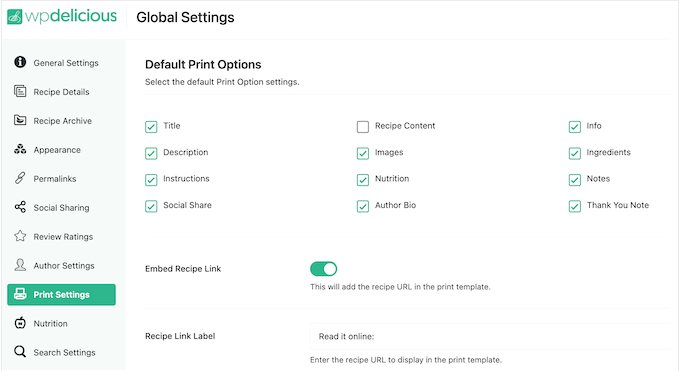
21. Surprise Me Feature
Some readers may not have a particular recipe in mind. In that case, you’ll be happy to learn that WP Delicious has a ‘Surprise Me’ feature that loads a recipe at random. This is a fun way for visitors to discover new meal ideas.
You can add this feature to any post, page, or navigation menu.
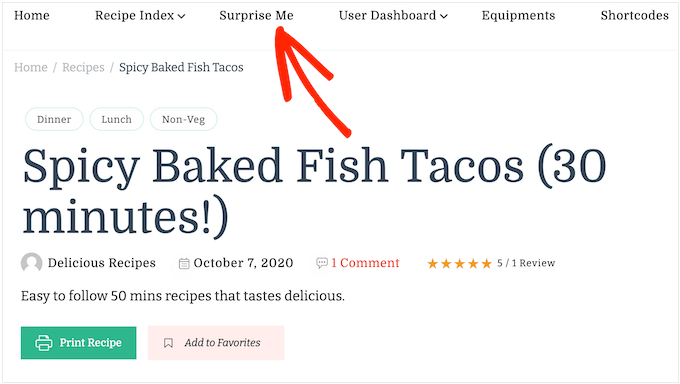
22. Supports User Registration and Ratings
WP Delicious has a simple user registration and login system that allows readers to create an account and then engage with your content in a ton of ways.
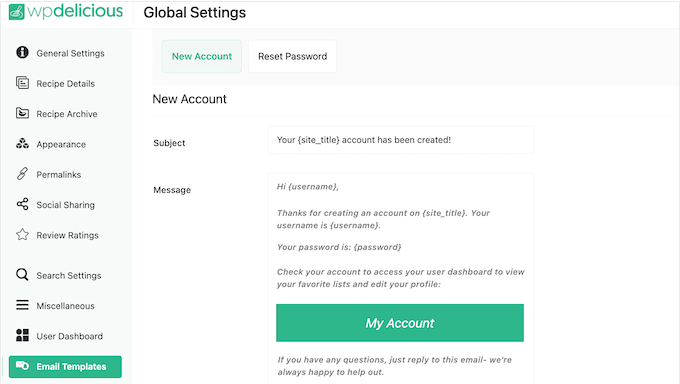
To start, registered users can post emojis and add your recipes to their ‘Favorites’ list.
They can access this ‘Favorites’ page at any time, so these recipes are always within easy reach.
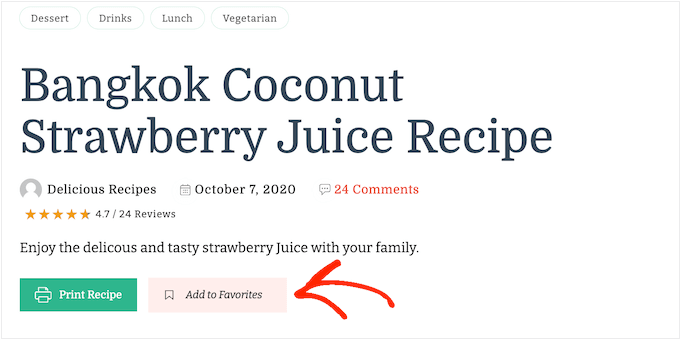
In addition, registered users can give your recipes a star rating. In this way, you can see which recipes readers prefer, and then create more of that content moving forward.
Behind the scenes, WP Delicious includes these reviews and ratings in their Recipe schema data, so they may appear in relevant SERPs, and give your recipes more credibility.
Users can also post questions on your recipes and upload their own photos. That said, WP Delicious can help you build a sense of community, boost engagement, and convince visitors to keep coming back to your website.
23. Accept User-Submitted Recipes
Do you want to accept user submissions on your website? WP Delicious has a recipe submission form so visitors can write recipes and send them for publishing.
You can view these submissions in your WordPress dashboard, make any changes, and publish the best ones on your website. Every time you publish a user-submitted recipe, WP Delicious will notify the guest author via email.
This form works out of the box, or you can customize it to collect exactly the information you need from readers.
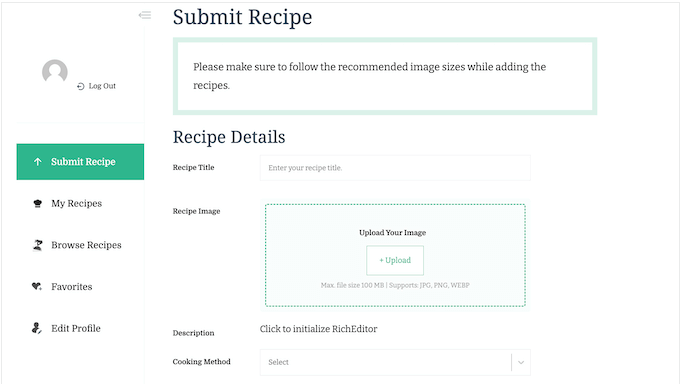
24. Google reCaptcha Support
Spam registrations can be a big problem for membership sites, multi-author blogs, and any website where you accept user registration.
With that in mind, you’ll be happy to learn that WP Delicious can add Google reCaptcha (V2 or V3) to its Registration and Recipe Submission forms.
This can help protect your site against spam registrations, and spammy recipe submissions.
25. Built-in Analytics Dashboard
If you’re going to grow your website into a successful project or online business, then you’ll need to know what your audience enjoys.
WP Delicious comes with built-in analytics that show the total likes, favorites, and rating for each recipe. It will also highlight your most popular, top-rated, and favorite recipes. You can then use this insight to create more of the content that readers love.
26. Support For Affiliate Marketing
Affiliate marketing is a popular way to make money online blogging with WordPress. For example, you might link to a particular brand of electric mixer, and earn commission every time someone makes a purchase using this link.
The good news is that WP Delicious can add affiliate links to your recipe cards, so you can monetize your content.
If you do use affiliate links, then many countries have laws about failing to disclose paid endorsements. For example, in the United States, you might get a fine from the Federal Trade Commission. You may even end up banned from reputable networks such as Amazon affiliates.
If you do use affiliate links, then WP Delicious can add an Affiliate Disclosure to your Recipe page or Equipment section automatically. Simply type in the text you want to use and choose where this disclaimer should appear, and WP Delicious will handle the rest.
27. Community and Professional Support
WP Delicious has a straightforward user interface that allows you to create recipes using a dedicated editor. Alternatively, you can build recipes on-the-fly using the Dynamic Recipe Card and the default WordPress block editor.
However, you may need some extra help to unlock the plugin’s more advanced features. With that in mind, there is online documentation that you can access 24/7.

WP Delicious also a range of video tutorials covering topics such as how to create recipes using custom post types, and how to display recipes on your custom home page.
If you’re using the free plugin, then you can post to the WP Delicious forum on WordPress.org, and get answers to basic questions.
When posting to public support forums, it’s always a good idea to include as much information as possible, so the experts can understand your problem fully and post a helpful response. For more on this topic, please see our guide on how to properly ask for WordPress support.
Do you prefer one-on-one support? All the premium WP Delicious plans include professional support, so you can submit a ticket and get help directly from the experts. According to their website, the WP Delicious team aim to respond to all questions by the next business day.
WP Delicious Review: Pricing and Plans
If you’re just getting started or have a limited budget, then you can download the lite version of WP Delicious for free. This plugin allows you to create an unlimited number of SEO-friendly recipes, complete with galleries, star ratings, and social sharing icons.
However, if you want to accept reader submissions or unlock other advanced features, then you’ll need to upgrade to the premium plugin.
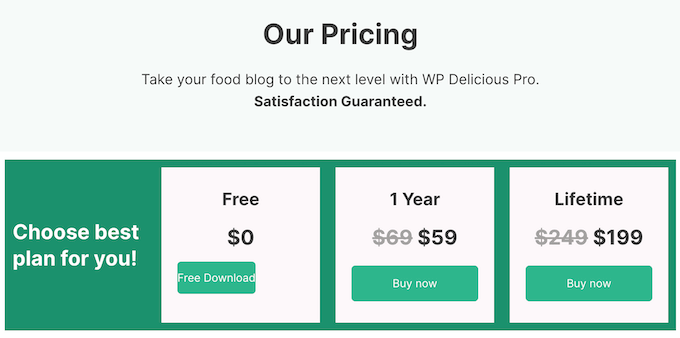
You can either buy an annual license for $59 or a lifetime license for $199. Both these plans allow you to install WP Delicious on a single website, blog, or online store.
The premium plans also include 8 recipe card layouts, built-in analytics, a ‘Related Recipes’ section, and other advanced features.
WP Delicious Review: Is It the Right Recipe Plugin for You?
After looking at the features, support, and pricing, we’re confident that WP Delicious is a great recipe plugin. It allows you to create an unlimited number of professional-looking recipes that feature detailed step-by-step instructions, images, videos, and lightbox popups.
You can also create lists of ingredients and equipment, and even make money by adding affiliate links to your recipe cards.
In addition, WP Delicious can add user registration forms and recipe submission forms to your website. This allows you to accept user-generated content, and publish these recipes to your WordPress website.
We hope this WP Delicious review helped you decide whether it’s the right recipe plugin for you. Next, you may want to see our guide on how to create a custom Instagram photo feed, or check out our expert pick of the best web push notification software.
If you liked this article, then please subscribe to our YouTube Channel for WordPress video tutorials. You can also find us on Twitter and Facebook.



Syed Balkhi says
Hey WPBeginner readers,
Did you know you can win exciting prizes by commenting on WPBeginner?
Every month, our top blog commenters will win HUGE rewards, including premium WordPress plugin licenses and cash prizes.
You can get more details about the contest from here.
Start sharing your thoughts below to stand a chance to win!